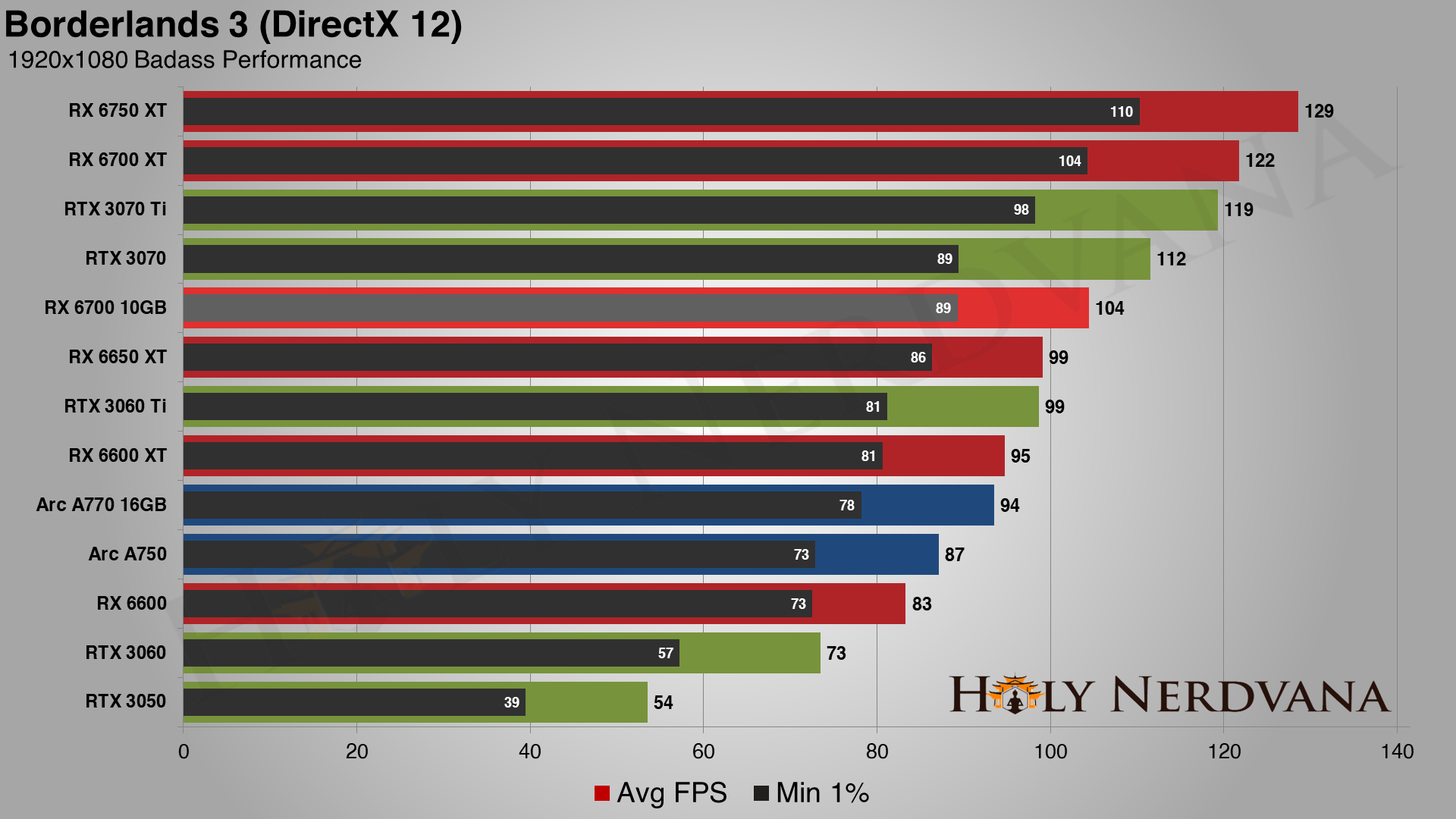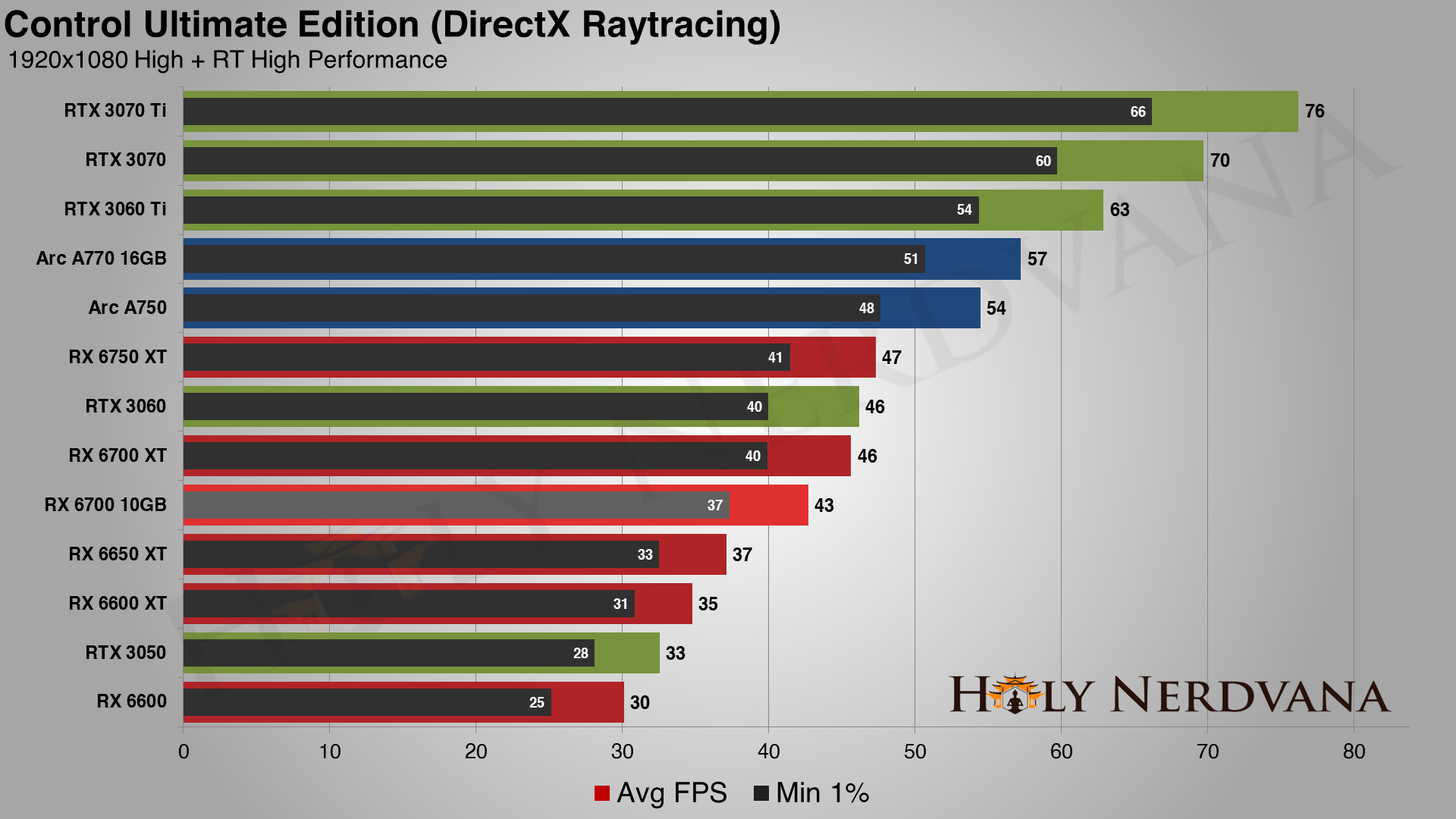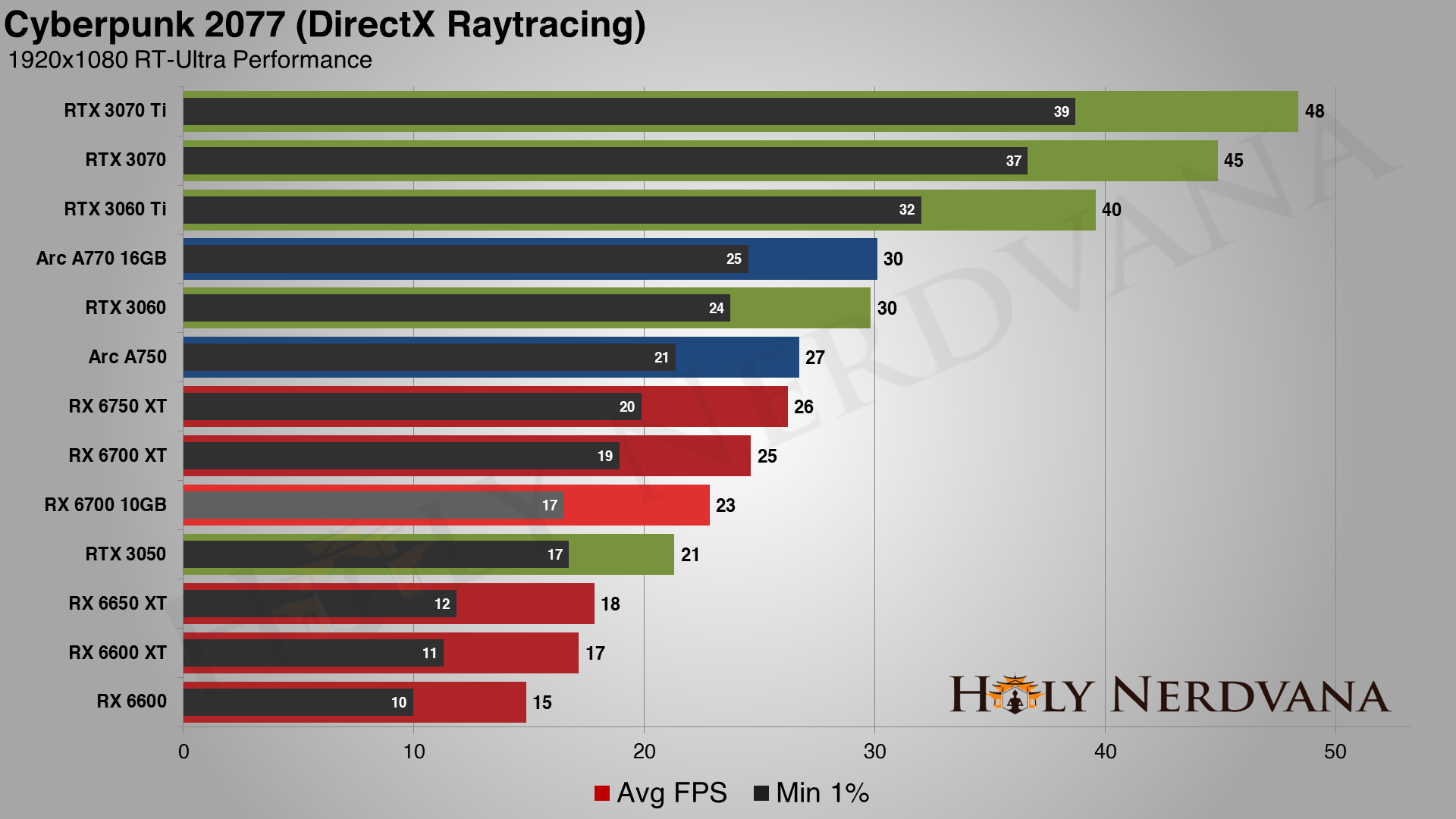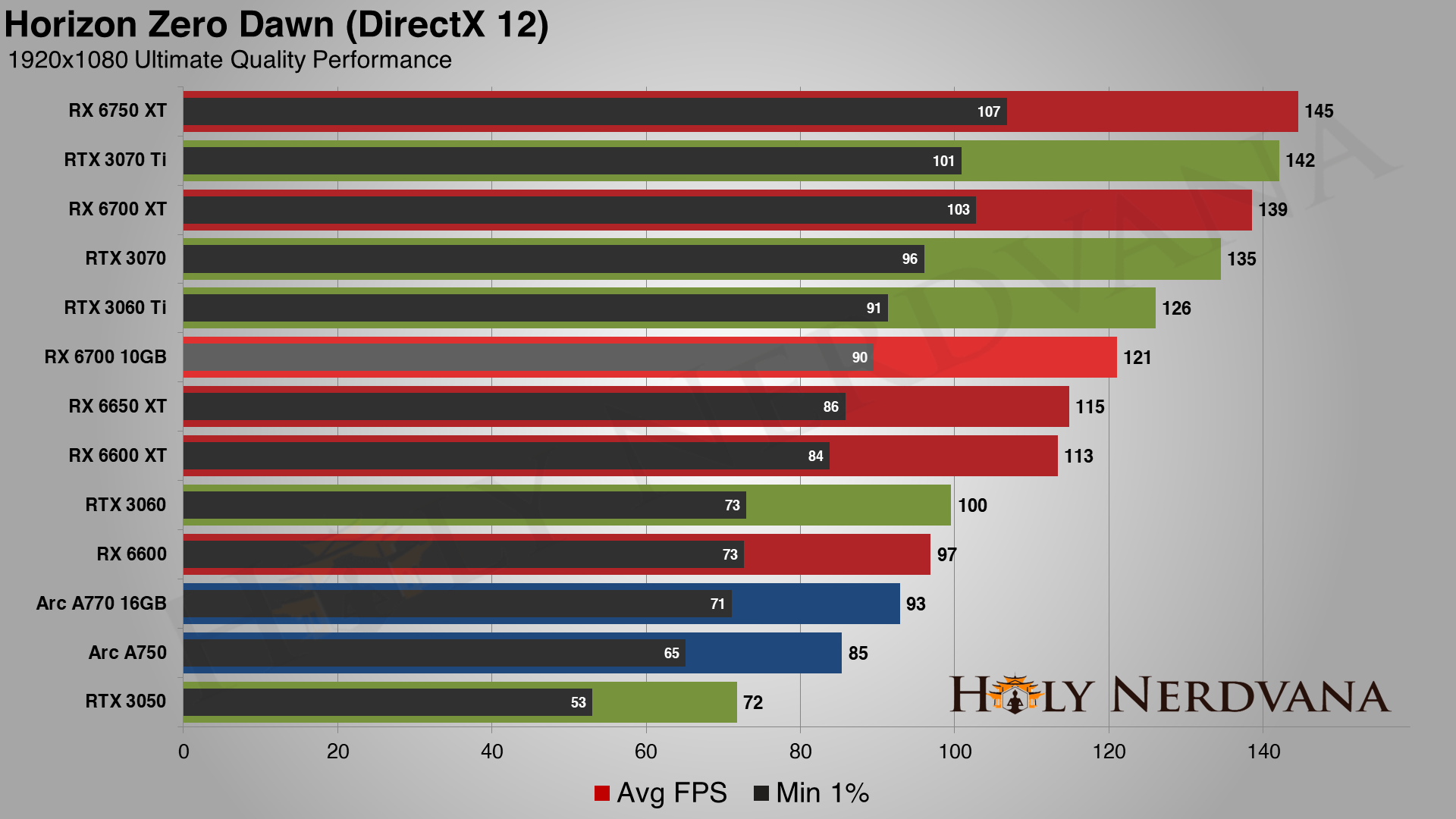We've got something new for today: My first graphics card review for the site. It's mostly because this is a card that hasn't been reviewed much, the AMD Radeon RX 6700 non-XT 10GB model. This GPU came later in the life cycle, and it sits roughly between the RX 6650 XT and RX 6700 XT — in price as well as performance. It's sort of a last gasp for RDNA 2, right as RDNA 3 cards are about to launch, though the RX 7900 XTX and RX 7900 XT will be priced in an entirely different category. You can already find the FPS results in our GPU performance hierarchy, but let's dig into things a bit deeper for this review.
| AMD Radeon RX 6700 10GB Specifications | |
|---|---|
| Architecture | Navi 22 |
| Process Technology | TSMC N7 |
| Transistors (Billion) | 17.2 |
| Die size (mm^2) | 336 |
| Compute Units | 36 |
| GPU Cores (Shaders) | 2304 |
| Ray Accelerators | 36 |
| Boost Clock (MHz) | 2450 |
| VRAM Speed (Gbps) | 16 |
| VRAM (GB) | 10 |
| VRAM Bus Width | 160 |
| Infinity Cache | 80 |
| Render Outputs | 64 |
| Texture Mapping Units | 144 |
| FP32 TFLOPS (Single-Precision) | 11.3 |
| FP16 TFLOPS (Half-Precision) | 22.6 |
| Bandwidth (GB/s) | 320 |
| Total Board Power (Watts) | 175 |
| Launch Date | March 18, 2021 |
| Launch Price | $369 (unofficial) |
For quite some time, the Radeon RX 6700 XT was the only desktop card to use AMD's Navi 22 GPU. Later, the RX 6750 XT joined the fun, and both are fully enabled variants of the chip. Given there are always defective die from a wafer, and most of those can be harvested by disabling the affected functional units (CUs, SMs, memory controllers, etc.), we long expected there would be an RX 6700 non-XT card. But it didn't come, and it didn't come, and then it suddenly stealth-launched from a couple of AMD's AIC (add-in card) partners: Sapphire and XFX. Maybe there are others making the 6700 10GB, but in the US at least these are the only ones available.
There's no official pricing on the RX 6700 10GB, sort of like there's no official price for the RTX 3080 12GB or some of the other custom GPUs. It's been a few months since they first appeared, and our recollection is they cost over $400 at launch, but pricing has dropped in the ensuing months. Now, the Sapphire Pulse card we're reviewing goes for $349 while the XFX Speedster model costs $329.
That's probably fair, as Sapphire tends to build a better product — quieter fans, same or better performance. Still, the Pulse is a baseline model with no frills like RGB lighting to get in the way. Also note that it has just a single 8-pin power connector, a tried and true option that shouldn't melt and will provide more than enough electricity for the 175W part. The card has three DisplayPort 1.4a outputs and a single HDMI 2.1 port, typical of most modern graphics cards.
Compared to the RX 6700 XT, you get four fewer CUs (Compute Units) and a 160-bit memory interface. Along with one of the memory channels, you also lose 16MB of Infinity Cache. Memory bandwidth is still reasonable at 320 GB/s, and the extra 2GB might help performance in some games. Speaking of which...
There's not much point in spending a lot of time analyzing the performance. As expected, it lands about midway between the RX 6650 XT and the RX 6700 XT. That makes sense considering it has 11–25 percent more memory bandwidth than the RX 6600/6650 XT and about 5–7 percent more compute available. It also has more Infinity Cache, which means it might make better use of the compute, and the real-world clocks tend to be higher than the official specs.
It's interesting to see how this latecomer fares against other similarly priced graphics cards as well. Overall, it trades blows with the Intel Arc A770 16GB, winning at 1080p medium, tying at 1080p ultra, and then falling behind at 1440p and 4K. It also wins against the RTX 3060, sometimes by a lot, and at times it looks more like an RTX 3060 Ti competitor.
But raytracing proves to be the usual Achilles' Heel for AMD's RDNA 2 architecture, and in our more demanding DirectX Raytracing tests the RX 6700 10GB often falls behind the 3060, and in Minecraft it even trails the lackluster RTX 3050. Buy it for the rasterization performance, in other words, and not for its raytracing prowess.
Also, given the $20 savings, if you're looking at the RX 6700 10GB you might want to opt for the XFX variant. Sapphire's card is fine, but every penny counts in these trying times. If you can afford the extra $20, you could probably also afford another $50 and start getting into cards that are overall more capable, like the RX 6750 XT.
Keep an eye out for sales this holiday season, as we're expecting a lot of GPUs to get cleared out to make way for the incoming RX 7000-series and RTX 40-series graphics cards. Those will start at the extreme and high-end pricing segments, but come spring 2023, we'll probably see something closer to the mainstream market — RX 7700 maybe, as a trimmed down take on the RX 7700 XT? Make it so, AMD, make it so, and this time skip the one year delay between those card launches.
Holy Nerdvana Verdict: 81/100
A capable GPU that would have been a lot more attractive had it arrived shortly after the RX 6700 XT. Pricing and performance are still decent, raytracing proves a weak spot for AMD as usual, but we can't help but look longingly toward the near future when we'll see next-generation mainstream graphics cards deliver significantly more performance for a hopefully similar price.



















No comments:
Post a Comment